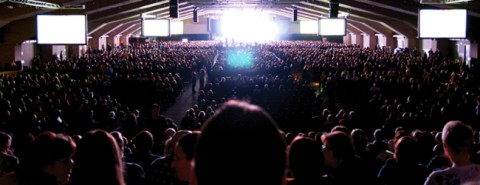More people, looser ties: Social life in the megachurch

The size of the church attended by a typical Protestant in America has increased over the past few decades. According to the Hartford Institute for Religion Research, the number of megachurches (churches with more than 2,000 people in attendance at weekly worship) increased from fewer than 100 in 1970 to nearly 1,800 today. And according to the National Congregations Study, about 15 percent of Protestants in this country attend a megachurch—twice as many as did in 1998.
Megachurches are hardly a new phenomenon. The landscape of Protestantism has been dotted since the mid-19th century with very large churches—like Broadway Tabernacle in New York City, Temple Baptist in Philadelphia, Moody Church in Chicago, Angelus Temple in Los Angeles, and Second Baptist in Houston. All of these large congregations rose to prominence before 1930. The increase in popularity and prominence of megachurches is new, however. The reasons for the rise remain murky, but some guesses can be made.
One guess concerns one of the most important social trends of post–World War II America: the increased participation of women in the paid workforce. According to the Census Bureau, 57 percent of working-aged women participated in some form of paid work in 2013—up from about 35 percent in 1950. Among women who work, far more work full time than in the past. Meanwhile, most men are employed, and if employed they usually work full time. This means that in more and more marriages, both partners are spending more time at work than they did in previous decades.




